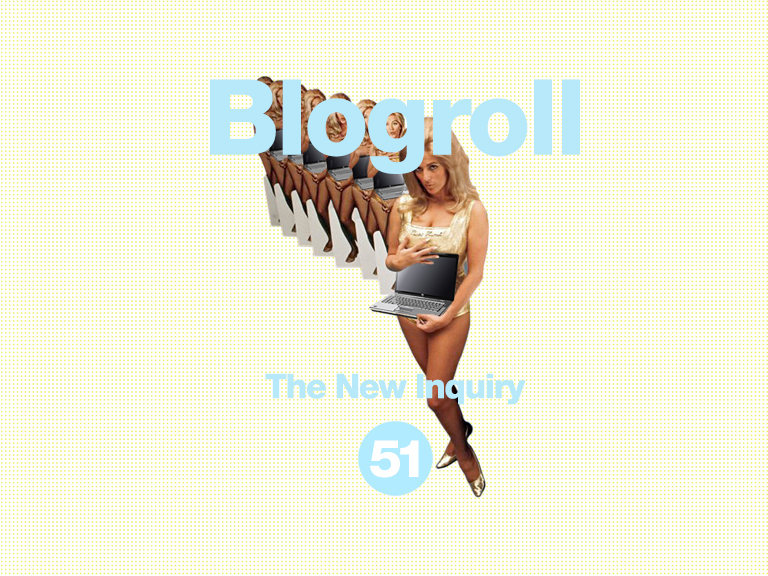This is the editorial note to TNI Vol. 51: Blogroll. View the full table of contents here.
Subscribe to TNI for $3 and get Blogroll (and free access to our archive of back issues) today.
• • •
A quote from the artist Ann Hirsch goes: “Whenever you put your body online, in some way you are in conversation with porn.” Something similar is true of text: whenever you put your words online, in some way you are in conversation with machines. The effect this has on texts isn’t always plain, but it is readable if you’re looking for it. The harried clickbait that calls out to the algorithms for recognition, the platform constraints that drive the delicate formal innovation on Twitter, the compulsive vulnerability elicited and nurtured by your entire social universe residing in your pocket at all times: All of these represent an entry by the internet into the history of forms of writing. Of course language has always been a kind of technology, written or no, but in this moment of rapid technological development, new forms of fluency in hybrid machine-human texts are starting to come into their own.
Blogs are one of the earliest, and most enduring, new genres of this period. While their heyday may have passed, the advances bloggers made in incorporating the new, free publishing platforms into the forms of writing they did will stand in the historical record as markers of a threshold in human communication. Blogs mark the moment when the means of production and circulation of ideas became a consumer product, and the imperative to generate text for profit began to universalize itself. As postwar Fordism relied on extending ownership of heavy machinery (cars, washing machines, etc.) to the working class, capital has now found it necessary to entrust the light machinery of communication to its captive enemies, too.
Bloggers invented a form of writing that took its lightness seriously, delighting in the relative freedom that came from being responsible for heeding undiscovered rules. Communities of commenters, co-investigators, and interlocutors emerged alongside posts of three sentences and a link, or a multiply-updated excursus on psychoanalytic misreadings of horror films. An entire embarrassing school of blog-philosophy arose. Amid all of this, the New Inquiry formed itself, the fusion of three personal blogs and a counterfeit-venerable name. When we became large enough to launch a magazine and redesign the website, leaving our Tumblr skin behind, we decided to add eight bloggers to our rolls. Why? Unclear now, even in hindsight, but we are very glad we did.
The eight bloggers have since become nine, and all of them have contributed immensely to the New Inquiry’s project, each carving out precise niches while cohering harmoniously with the others, and writing nimbly and profoundly on topics that otherwise would have to travel the length of the cumbersome editorial process before release onto the internet. Our bloggers’ identities are by no means exhausted by their affiliation with us, but taken together they represent in some fashion the outline of what our project entails: The history of forms of consumption, the future of forms of expression, the gendered work of appearances, the record of violence in art, the glimmer of hope in violence. In this issue, we collect some of their most cherished work.
